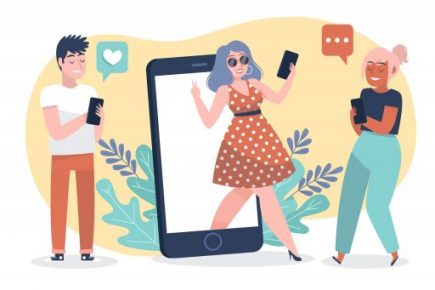

Since the rise of influencer culture, partnerships between major brands and celebrity influencers have become a staple in marketing strategies. These days it seems like everyone’s an influencer, that more and more people are cashing in on this approach to visibility. But that might soon be coming to an end. So, are we done with influencers in 2020?
What are influencers?
If you and your agency don’t know what an influencer is, you’re a little behind. The term describes people with demonstrated influence over a particular audience on social media who are employed by companies or marketing agencies to promote a particular product. But even if you’re behind, that might not be a bad thing: recently, we’re seeing signs that influencers can’t effectively influence anymore.
Is the world done and over influencers in 2020?
New studies have found that only 3% of consumers are influenced by celebrity influencers to purchase specific products.
So what’s happening? For one, the way consumers interact today with brands. Customers are actively engaging with each other (and brands), seeking authentic, meaningful engagement and forming their own communities based on shared interests and values. This is what’s being referred to as “tribes”. Tribes are micro-cultures of consumption – kind of like little customer communities, but focused on the relationship among consumers sharing common traits.
Why are people getting tired of influencers?
The initial appeal of platforms like Instagram, Facebook and Twitter was that they offered a sweet experience for users of all ages around the world – a welcoming place for self-expression and genuine engagement. But in recent years, social media has become nothing more than endless ads and sponsored posts that feel inauthentic to users.
There’s a greater demand for authentic engagement driven by millennials and Gen Z. People are tired of the generic, cookie-cutter posts showing celebrities posing with hair gummies, boutique clothing and diet pills. Instead, they want real, unstated content to engage with, and this is particularly the case for younger users.
Then there’s the problem with fake influencers with fake followers, engagement and likes. Influencers in 2020 now have major financial incentives to boost their numbers. But with that comes the rise of bots, paid followers and other shortcuts. There have been several cases where influencers engaged by major brands have been encouraged to lie about a product or were found to have follower bases estimated to be up to 70% fake.
According to Big Commerce who is one of the largest ecommerce platforms for selling your products they mentioned Influencer Marketing is on the rise for 2022.
19% of marketers will spend $1,000 – $10,000 per year on influencer marketing in 2020, while 18% are spending between $100,000 – $500,000 per year. 7% of companies plan to invest over a million dollars in influencer marketing in 2020.
These are staggering statistics when it comes to influencer marketing. Even though, we discussed the trend of moving away from large influencers with large followings and favoring smaller influencers in smaller niches and smaller tribes, the trend for increasing your marketing investment into influencers is growing. The chart below breaks down the marketing investment many businesses are projecting for 2022.

Same old same.
It’s often we find ourselves scrolling and feeling deja vu – the same aesthetic from someone’s avocado bread or a too-perfect gym selfie. 47% of consumers report feeling fatigued by repetitive influencer content. In its place, a new generation of influencers has emerged. These new influencers are young content creators who are willing to engage with their audience in unique ways – even if it means being dorky and less filtered.
Another trend driving people away from influencers is an over-reliance on famous, somewhat household names. When it comes to mega-celebrities, there’s only so much paid sponsorship an individual can take on before their audience gets tired of it. For major brands, this means the limit does exist on what can be achieved through partnering with a-lists. Instead of finding the largest audience out there, brands should now look towards ways to build meaningful communities around smaller audiences. They should seek to reach the smallest valuable audiences.
What does this mean for brands on social media platforms?
How should they engage with their audience and get your products in front of the right customers? Start by re-engineering your influencer marketing strategy by dropping focus on generic, big-name influencers with huge audiences and focusing instead on the smaller communities that bond over common interests and passion. Brands can increase the visibility and relevance of their product by targeting smaller consumer tribes with individualized strategies.
Take time to understand your tribes. These individuals identify through their collective interests. The internet is filled with groups of people who are subconsciously forming tribes around nearly every interest that you can think of. Successful brands are those who understand how these tribes are created, what defines them and how they evolve over time. This includes analyzing their language, their platform(s) of choice, and their preferred methods of communication, then matching their content approach appropriately so they can then position the brand as a genuine tribe leader. This means rethinking what the term “influencer” means.
So ditch big names, and go for authenticity.